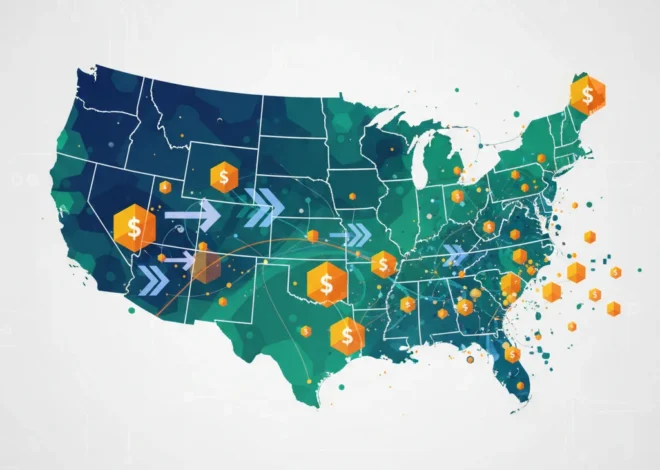
The Care-Bot Economy: Why Robots for the Elderly Are Wall Street’s Next Trillion-Dollar Frontier
Imagine a future where the daily challenges of an aging population are met not just with human compassion, but with tireless, intelligent, and cost-effective robotic assistance. It sounds like a scene from a science fiction blockbuster, but as a recent BBC report highlights, this future is rapidly approaching. Scientists are developing sophisticated robots capable of cleaning, providing exercise companionship, and offering round-the-clock care for our elderly parents. While the immediate question for many is one of trust and ethics, for investors, finance professionals, and business leaders, the more pressing question is: what is the economic and investment implication of this monumental shift?
The convergence of an unprecedented demographic crisis and exponential technological advancement is creating one of the most significant, yet underexplored, investment opportunities of the 21st century. The strain on national healthcare systems, like the UK’s, is a stark indicator of a global problem demanding innovative solutions. This isn’t just about social good; it’s about the birth of a new sector—the Care-Bot Economy—with the potential to reshape portfolios, disrupt the healthcare industry, and generate immense value on the stock market.
The Unfolding Crisis: The Stark Economics of an Aging World
Before we can appreciate the opportunity, we must understand the scale of the problem. The world is getting older, fast. The United Nations projects that by 2050, one in six people globally will be over the age of 65. This demographic inversion places immense pressure on the global economy. Pension systems, public finance, and healthcare infrastructure are all buckling under the weight of a shrinking workforce supporting a growing retired population.
The care sector, in particular, is at a breaking point. It’s a labor-intensive industry plagued by staff shortages, high turnover, and escalating costs. The emotional and physical toll on human caregivers is immense, leading to burnout and a perpetual talent drain. This isn’t a sustainable model. From an economics perspective, the current system represents a market failure—demand for affordable, high-quality care is skyrocketing, while the supply of human capital to meet it is dwindling. This is the fertile ground from which technological disruption grows.
BHP's Paradox: Why the World's Biggest Miner is Bullish Amidst China's Economic Storm
Rise of the Machines: A New Asset Class in Assistive Technology
The robots described in the BBC article are not the clunky, impersonal machines of yesterday. They are part of a new generation of “assistive technology” powered by artificial intelligence, machine learning, and advanced sensor technology. These machines can perform a range of tasks, from the mundane (cleaning and fetching) to the critical (monitoring vital signs, reminding patients to take medication, and facilitating communication with family and doctors).
This represents a paradigm shift in how we view healthcare assets. We are moving from a service-only model to a hybrid model that incorporates hardware, software, and data analytics. For those in the investing community, this opens up a new asset class. The companies building these robots, developing the AI that powers them, and creating the platforms that manage them are poised for explosive growth. This is more than just a niche market; it’s the foundation of a new technological infrastructure essential for modern society.
To better understand the financial and operational implications, let’s compare the traditional human-centric care model with an emerging robot-assisted model.
Comparative Analysis: Human Carer vs. Robotic Assistant
| Feature | Traditional Human Carer | Robot-Assisted Care Model |
|---|---|---|
| Availability | Limited by shifts, breaks, and labor laws (typically 8-12 hours/day). | 24/7 operational capability with breaks only for charging. |
| Cost Structure | Variable hourly wages, benefits, insurance, and overtime. High recurring labor cost. | High initial capital expenditure, followed by lower recurring costs for maintenance and software subscriptions (RaaS model). |
| Task Consistency | Performance can vary based on fatigue, mood, and individual skill. | Executes programmed tasks with perfect consistency and precision every time. |
| Data Collection | Manual, subjective, and prone to error or omission. | Automated, continuous, and objective data collection on vitals, activity, and environment. |
| Emotional Intelligence | High. Capable of genuine empathy, companionship, and complex emotional support. | Currently low to moderate. AI-driven empathy is simulated and lacks genuine human connection. |
| Scalability | Low. Scaling requires hiring and training more individuals, a slow and expensive process. | High. Production can be scaled rapidly to meet demand, and software updates can improve the entire fleet instantly. |
This table illustrates a clear trade-off. While robots cannot replace the genuine human touch, they offer a powerful solution for consistency, scalability, and cost-efficiency—key drivers for any successful investing thesis.
The Financial Plumbing: How Fintech and Banking Will Power the Care-Bot Economy
The rise of care robots necessitates a sophisticated financial infrastructure to support it. This is where financial technology (Fintech) and modern banking come into play. The business model will likely not be a simple one-time purchase but a “Robotics-as-a-Service” (RaaS) subscription.
Imagine a future where families or insurance companies subscribe to a tiered care package. A basic tier might include cleaning and reminders, while a premium tier offers advanced health monitoring and physical assistance. Fintech platforms will be essential for managing these complex billing structures, integrating with insurance providers, and providing families with transparent spending reports. These platforms could offer micro-loans for the initial hardware setup or “care now, pay later” financing options, revolutionizing how we fund long-term care.
Furthermore, the immense amount of sensitive health data collected by these robots raises significant security concerns. This is a potential application for blockchain technology. A decentralized, encrypted ledger could be used to store a patient’s health data, giving access only to authorized parties (the patient, their doctor, and trusted family members) and creating an immutable record of the robot’s actions. This enhances trust and security, which are critical for widespread adoption and a key consideration for mitigating investment risk.
Navigating the Headwinds: Risks, Regulation, and the Stock Market
No revolutionary technology comes without risk, and the path to a fully realized Care-Bot Economy is fraught with challenges. For investors, a clear-eyed view of these hurdles is crucial for successful trading and long-term portfolio allocation.
First, the regulatory landscape is nascent. Governments will need to establish stringent standards for safety, data privacy, and operational efficacy. Early-stage companies face significant regulatory risk, which could impact their path to profitability. Second, public acceptance is a major variable. The BBC article’s title itself poses the central question: “Would you trust them?” Overcoming this trust barrier will require extensive marketing, transparent operations, and a flawless safety record. Any high-profile failure could set the industry back years.
Finally, there’s the economic disruption. While creating high-tech jobs in engineering and data science, this revolution will inevitably displace a segment of the human caregiver workforce. Policymakers and business leaders must consider the societal impact and plan for workforce transitions. For the stock market, this means a period of volatility. Companies that successfully navigate these challenges will be rewarded handsomely, while those that stumble on regulation, public trust, or ethical missteps could see their valuations plummet.
Beyond the Pitch: What a Football Match Teaches Investors About Geopolitical Risk
The Final Analysis: A Non-Negotiable Future
The integration of robotics into elderly care is not a matter of ‘if’ but ‘when’. The economic and demographic pressures are simply too immense to ignore. The current system is financially unsustainable, and technology presents the most viable path toward a solution that is both scalable and economically sound.
For the astute professional in finance, banking, or investing, this is a ground-floor opportunity. It is a chance to invest in the foundational infrastructure of our future society. The Care-Bot Economy will spawn new industries, create new financial products, and redefine a multi-trillion-dollar segment of the global economy. The journey will be complex, filled with ethical debates and technological hurdles. But for those with the foresight to look beyond the sci-fi headlines, the potential returns—both social and financial—are extraordinary.


